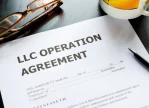Cash Flow Forecast: A Comprehensive Guide

Cash Flow Forecast: A Comprehensive Guide
Learn everything you need to know about cash flow forecasting with this comprehensive article. Understand what cash flow forecasting is, how to do it, and the benefits and drawbacks of this important financial tool.
- Approximately 35% of businesses in the United Kingdom reported more than six months of cash reserves as of August 2020.
- While 3% of those companies believe their cash reserves will run out within a month.
A Cash Flow Forecast is an estimate of future cash receipts and payments. It’s used to plan for short-term liquidity needs, such as paying bills and investing in new inventory. In short, it lets you know when you’ll have money and when you’ll need it.
29% of small enterprises collapse because they run out of money. A good cash flow forecast can help you avoid running out of money, ensure you have enough cash on hand to meet your obligations, and make sound decisions about how to grow your business.
Creating a cash flow forecast can be helpful for businesses of all sizes. But it’s especially important for small businesses, which are often more vulnerable to financial setbacks. If you’re not sure how to create a cash flow forecast or if you need help tracking your actual cash flow, keep reading. We’ll walk you through the process step-by-step.
What is Cash Flow Forecast?
A Cash Flow Forecast is a financial projection that shows how much money your business will make in the future. It’s a valuable tool for managers because it can help them plan for future expenses and save money on unnecessary costs. A cash flow forecast can also be used to determine whether your business is profitable or not.
Once you have estimated your revenue, expenses, and profits for each month of the year, you can create an overall cash flow projection. This document will help you identify areas where you need to make changes to improve your business’s financial health.
How to Do Cash Flow Forecasting?
Cash Flow Forecasting is a critical part of any business, and it’s important to have a system that allows you to predict your future financial needs. Several different methods can be used to forecast cash flow, and the most effective approach depends on the specific needs of your business.
- One popular method is the Net Present Value (NPV) analysis, which uses historical data to estimate future cash flows.
- Other techniques include trend analysis and regression analysis. Once you have determined which technique(s) will work best for your business,
- It’s important to develop a plan for implementing them. It would help if you also made sure you regularly update your forecasts as new information becomes available to make informed decisions about managing your finances.
Cash Flow Forecast Formula:
You can use the Cash Flow Forecast Formula to calculate your monthly cash flow. The formula considers your current assets, liabilities, and net income (or loss). You can also use the Cash Flow Forecast Formula to project future income and expenses. Knowing what’s coming in and going out each month allows you to make smart decisions about where to spend your money and which investments are most likely to pay off.
Cash Flow Forecast Formula = Beginning cash + anticipated inflows – anticipated outflows = ending cash.
Cash Flow Forecast Example:
In this example, we use data from a hypothetical company called ABC Corporation. ABC has been in business for five years, and during that time, it has generated $10 million in revenue. Its expenses have also been consistent throughout the years; they’ve averaged $2 million annually.
So far, everything looks good on the financial front. However, some warning signs suggest that things might not stay this way for long: ABC’s cash flow has decreased yearly. The decrease in cash flow may be due to several factors:
- The company is growing more slowly than expected
- Higher costs are starting to take their toll
- Changes in the economy are affecting sales
- Competition is getting tougher
Advantages and Disadvantages of Cash Flow Forecast:
Advantages:
Cash flow forecasts can help identify sources of cash inflows and outflows, as well as potential investments or expenditures that could impact the company’s bottom line. By understanding how much money the business will have available at any given time, managers can make more informed strategic decisions about where to allocate resources.
Cash flow forecasting also helps companies plan for future growth and changes in operating expenses. By anticipating when expenses will increase or decrease, companies can better manage their budgets and ensure they have enough money each month to cover unexpected costs. In addition, cash flow forecasts can help identify opportunities for cost savings by identifying areas where expenses are unnecessary or could be reduced.
There are several benefits to using cash flow forecast software:
- The ability to quickly generate accurate projections that reflect current financial conditions;
- The ability to see how various scenarios (e.g., increasing sales, decreasing costs) would affect the company’s overall liquidity;
- The ability to identify potential risks associated with upcoming events
Disadvantages:
Cash flow forecasting is critical for any business, but it can be especially challenging for startups. There are several disadvantages to using cash flow forecasts in startup businesses:
- Lack of historical data. Because startups typically don’t have as much revenue and expense history as established companies, it isn’t easy to create accurate cash flow forecasts.
- Uncertainty about future trends. It’s often hard to predict which areas of the business will grow or decline, which makes forecasting difficult and prone to error.
- Limited resources are available for investment. Forecasting requires time and effort that could be better spent developing the company further or expanding into new markets.
- Inability to make informed decisions about capital allocation. Without accurate information about how much money the business is making and spending, it’s impossible to make sound decisions about where to allocate scarce resources (e.g., hiring new staff or investing in new technology).
- High risk of financial instability. A poorly executed cash flow forecast can lead to a sudden drop in revenue or an increase in expenses, destabilising the company financially.
Key takeaway
After reading this guide, you will have a better idea of forecasting your cash flow and ensuring you’re getting the most out of your money. As you can see in the brief, we have a Cash Flow Forecast post-up. We encourage you to share the cash flow forecast on your social media accounts. Also, don’t forget to subscribe to the Prillionaires app premium membership and come back soon to have another read.
The best way to use this guide is to start by using your monthly bills, income, and expenses as the foundation for your cash flow forecast. Then, take some time to think about what is important in managing your business. Finally, develop a plan for how you plan to spend your money over the next 12 months.










